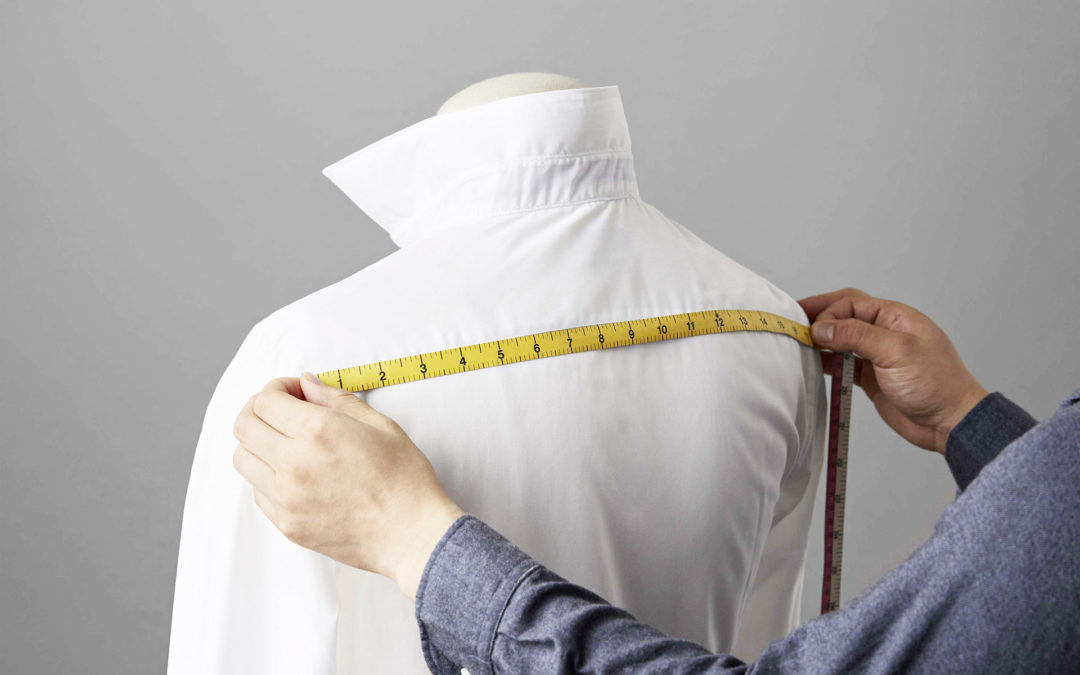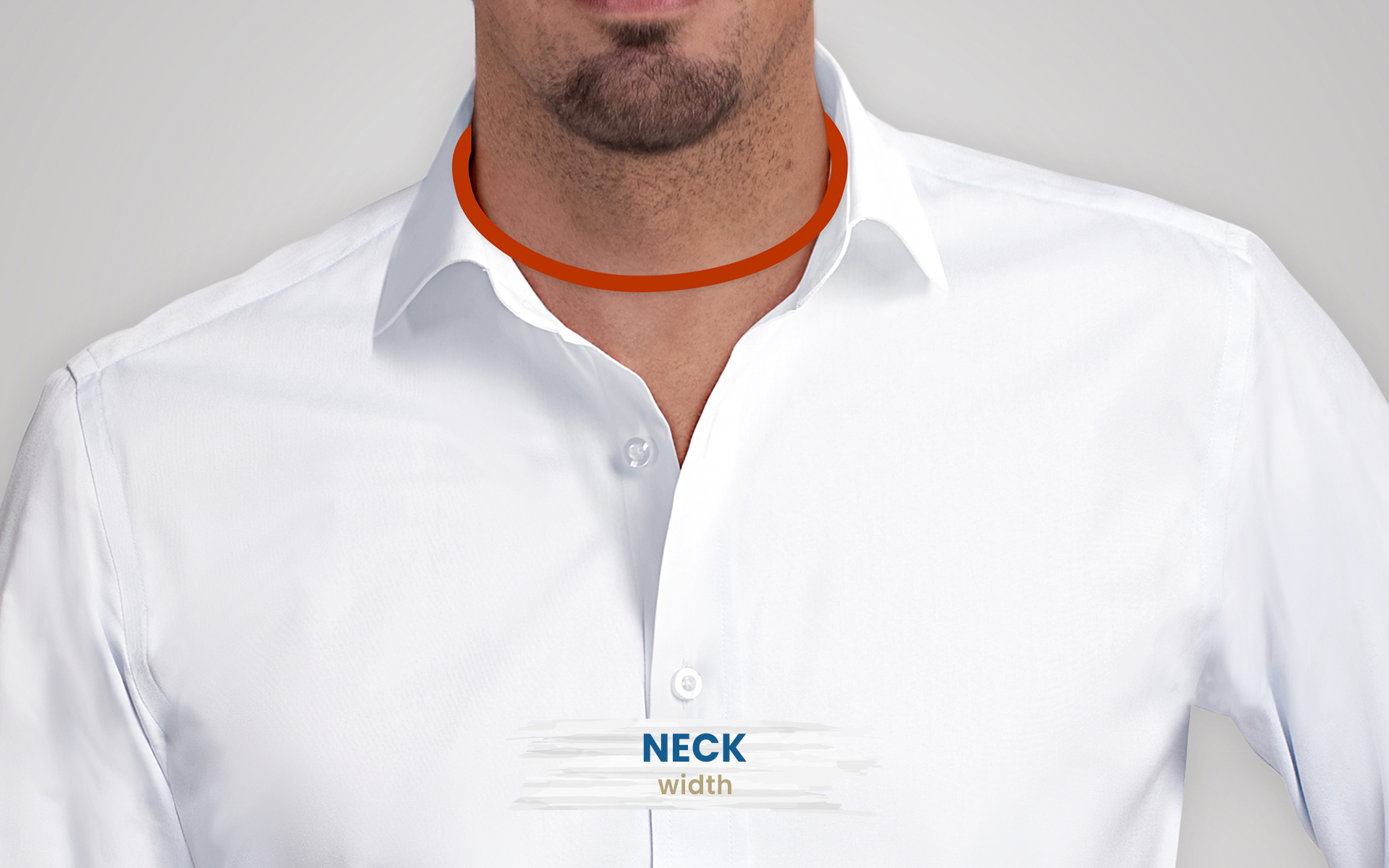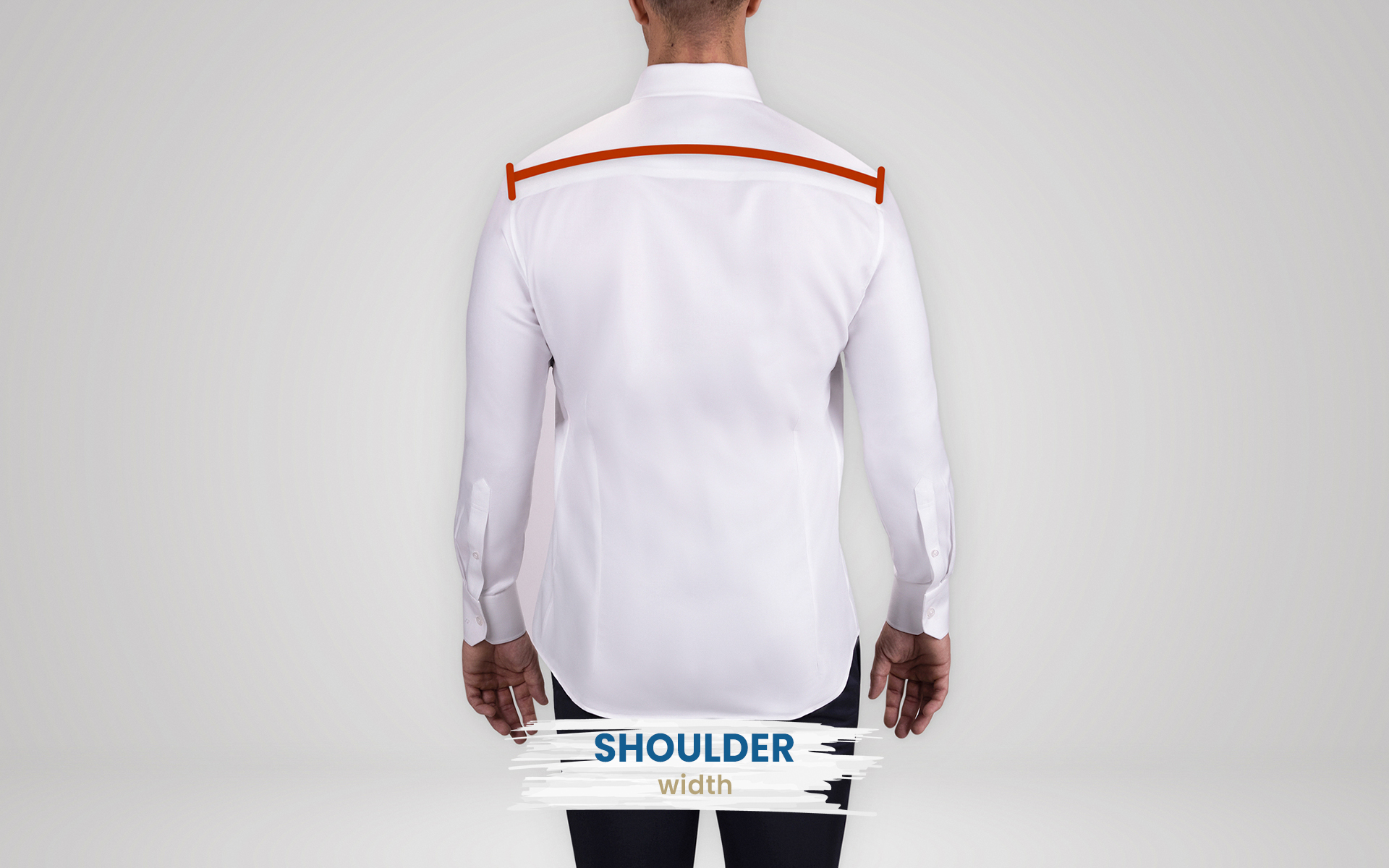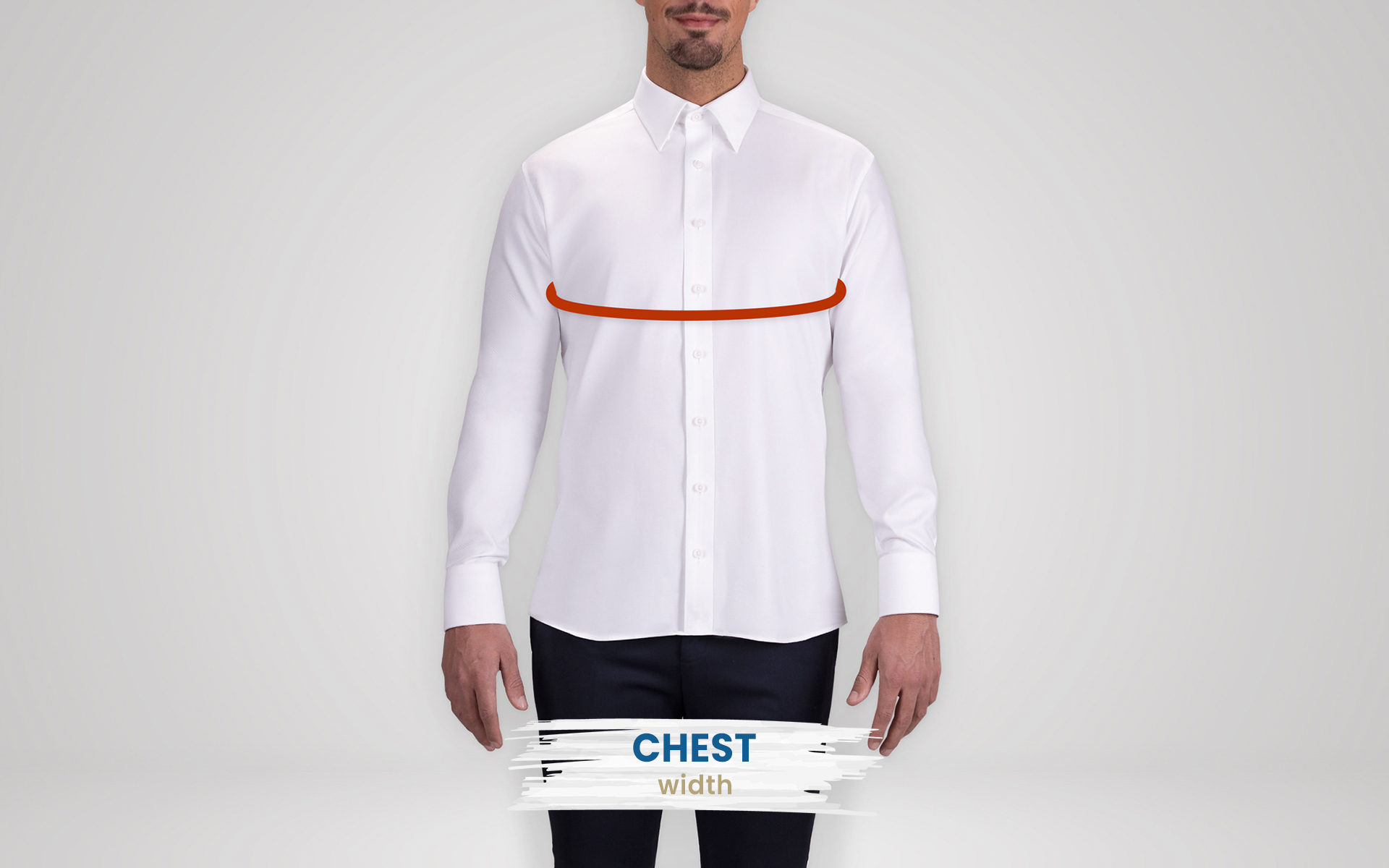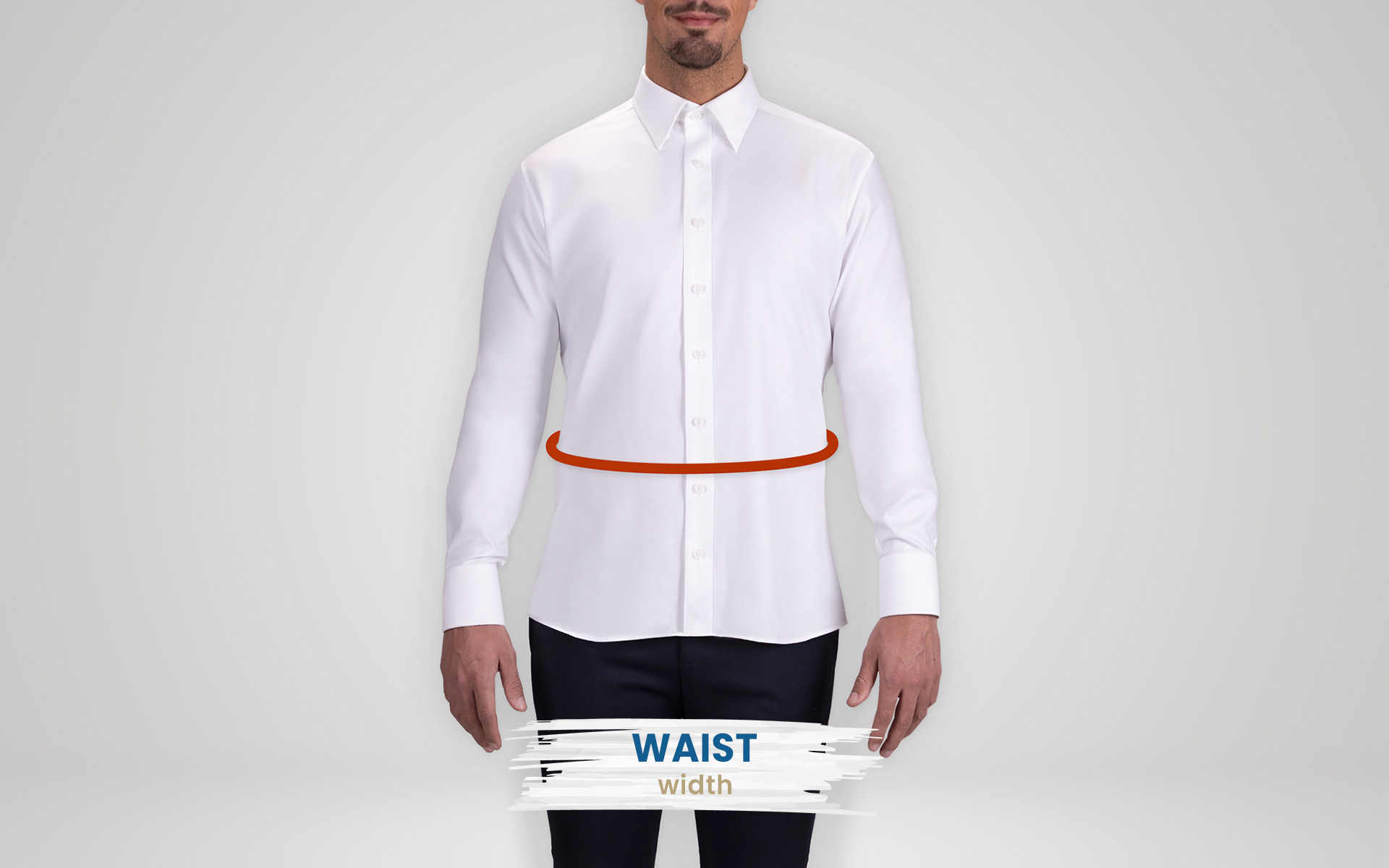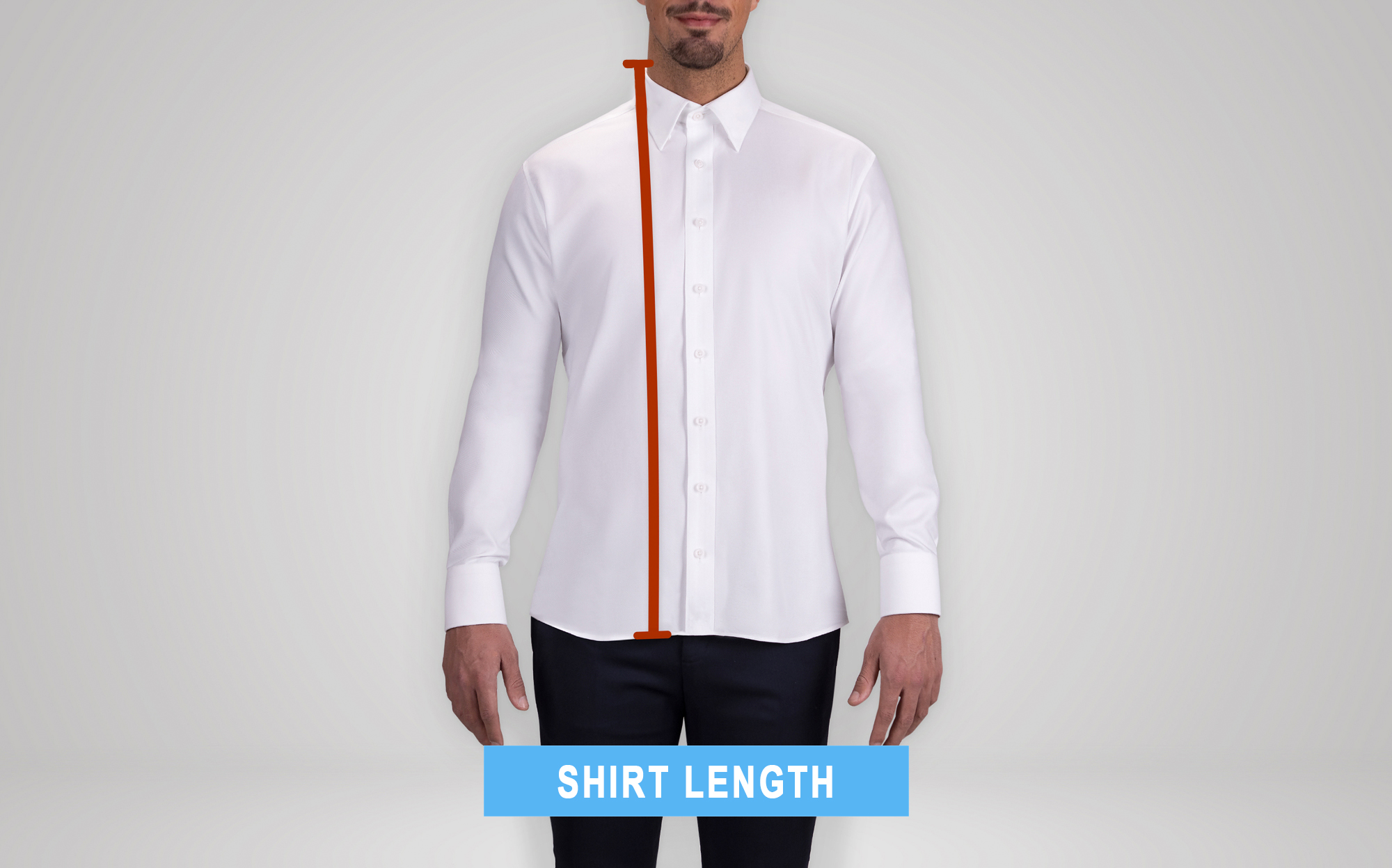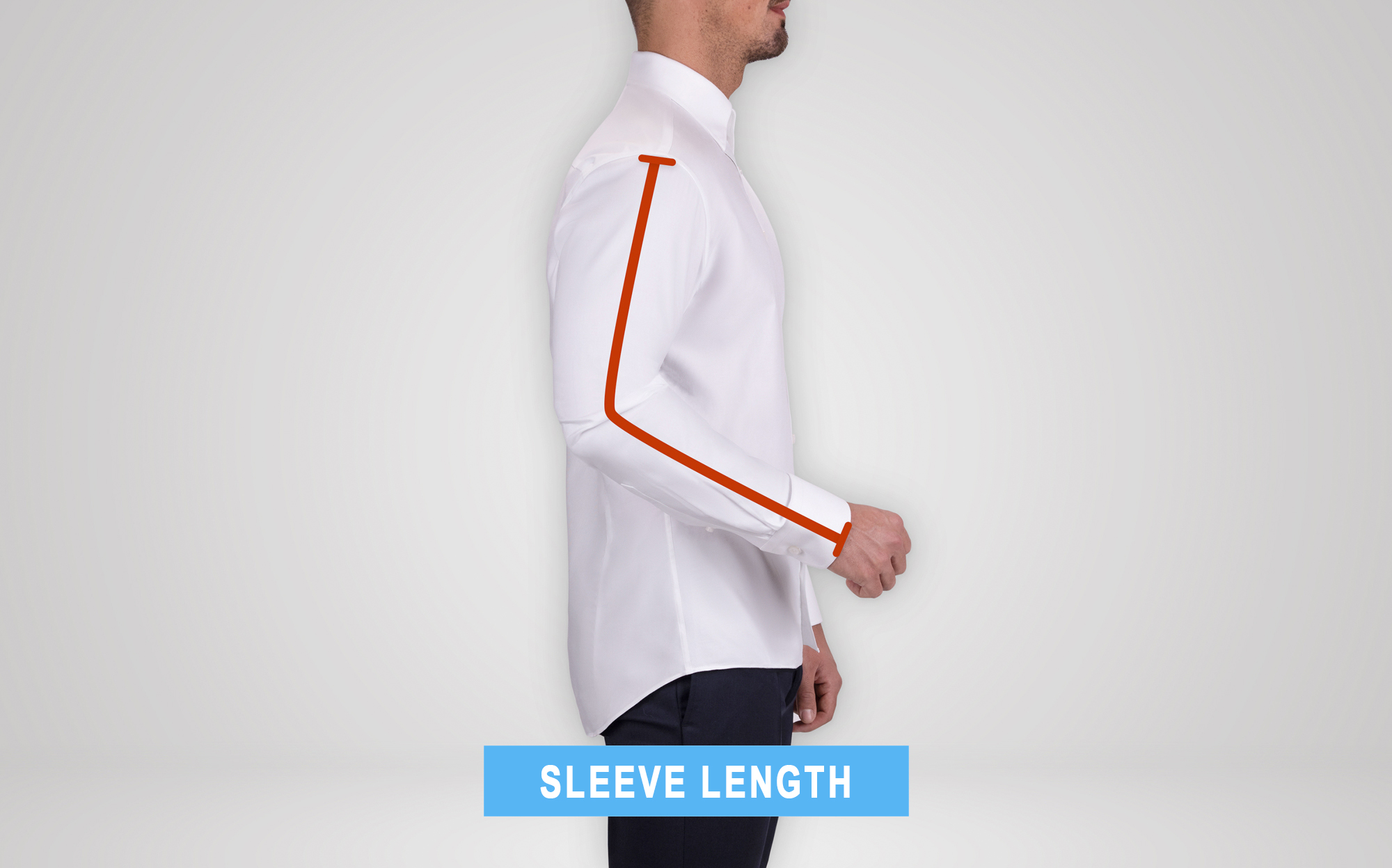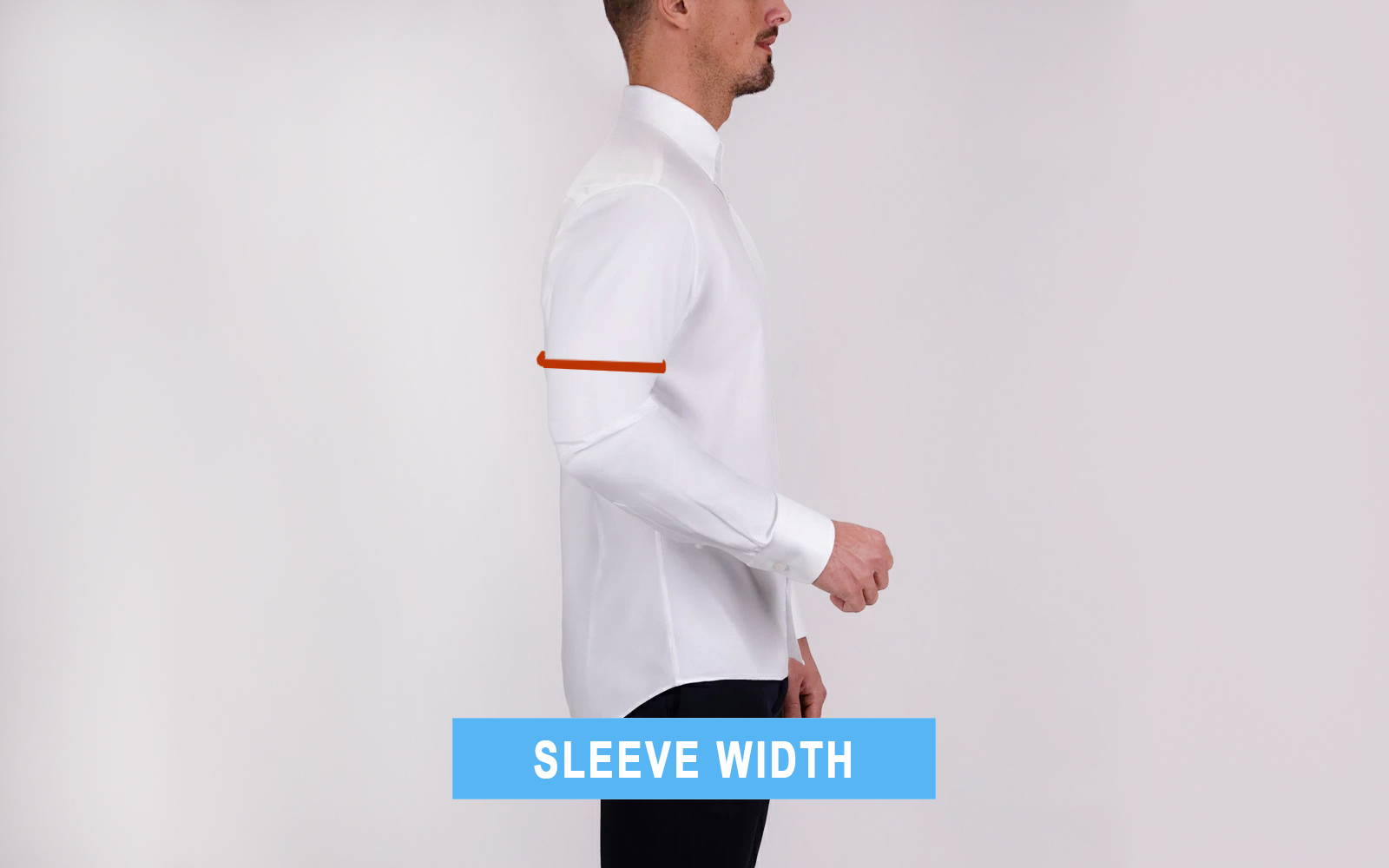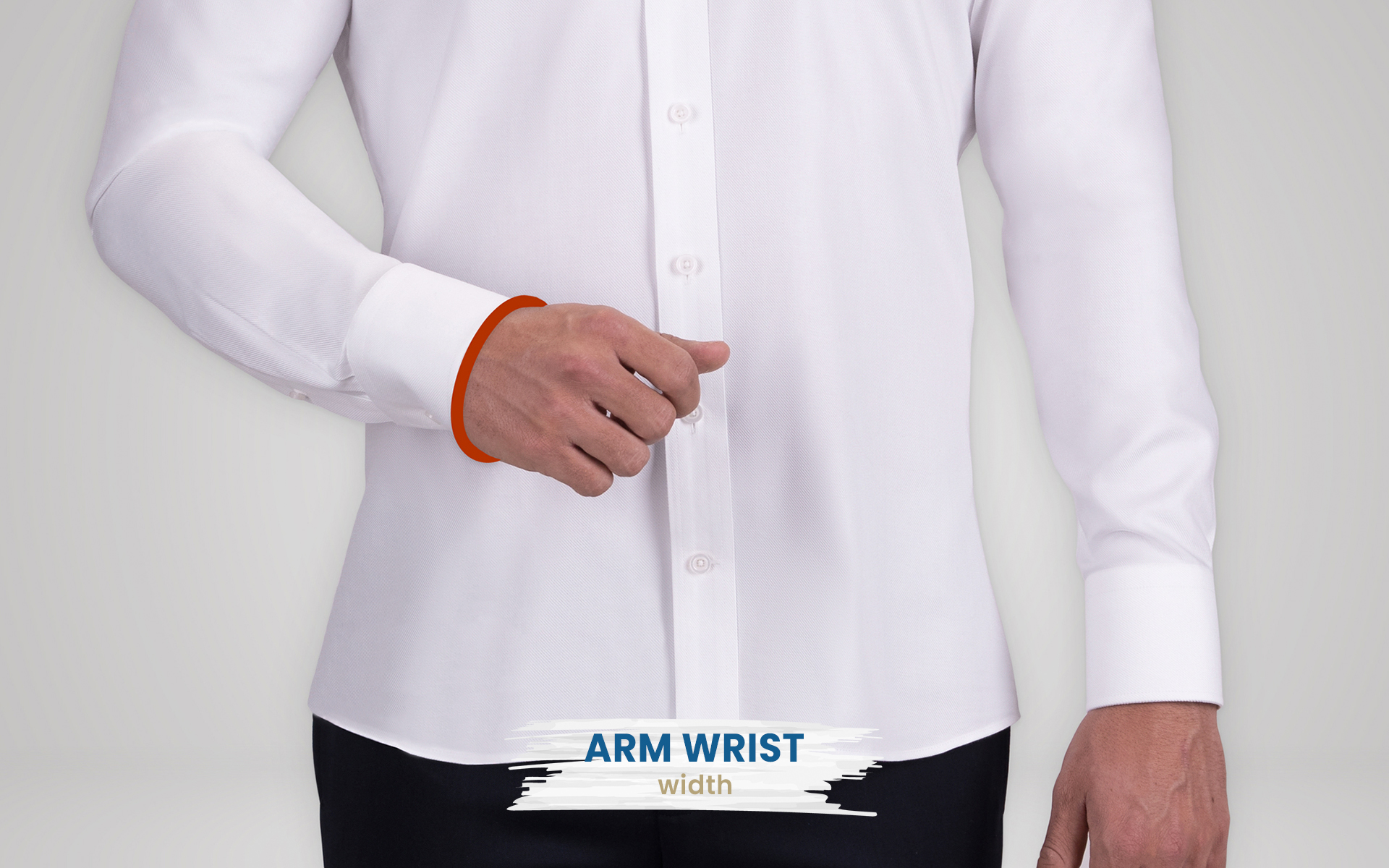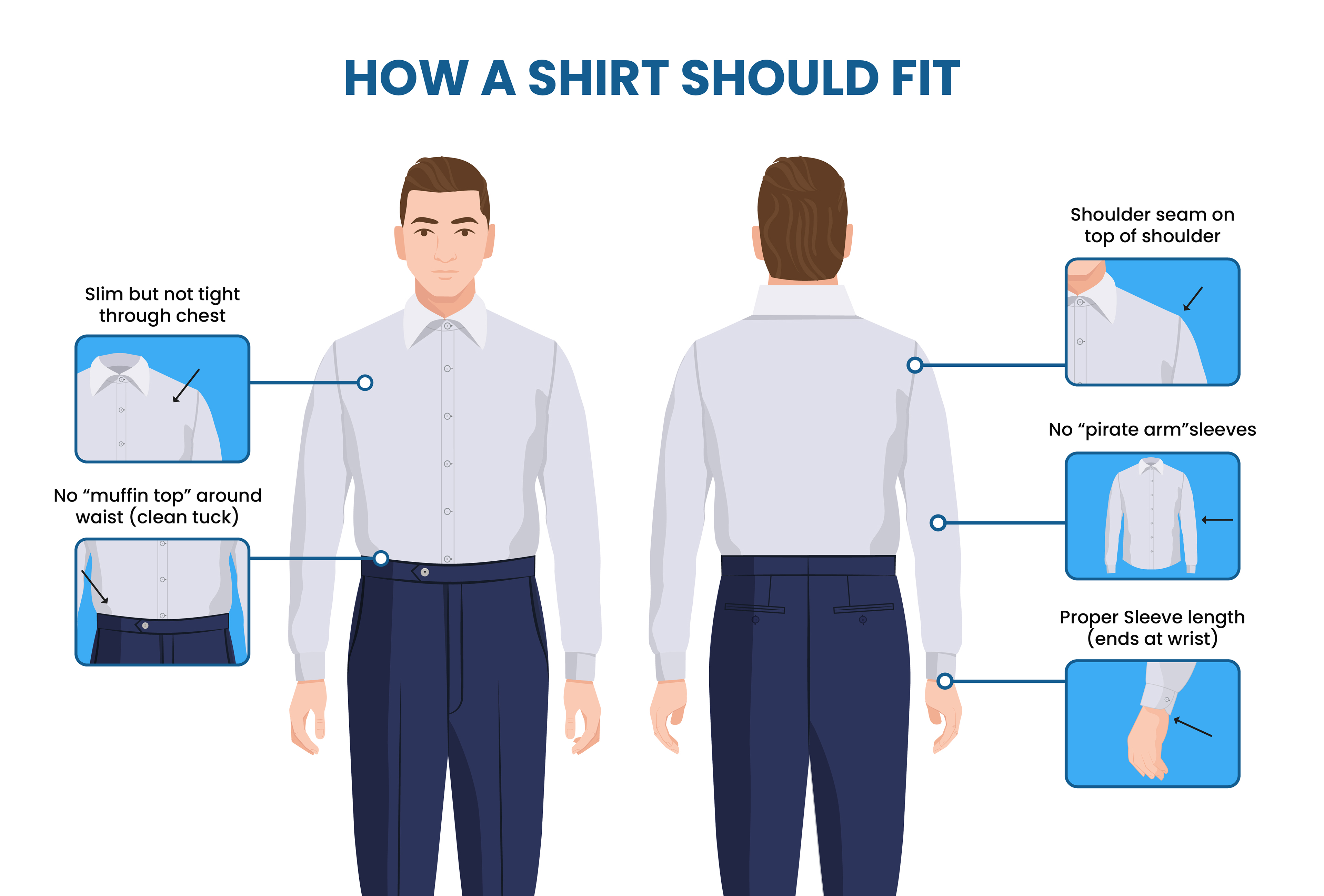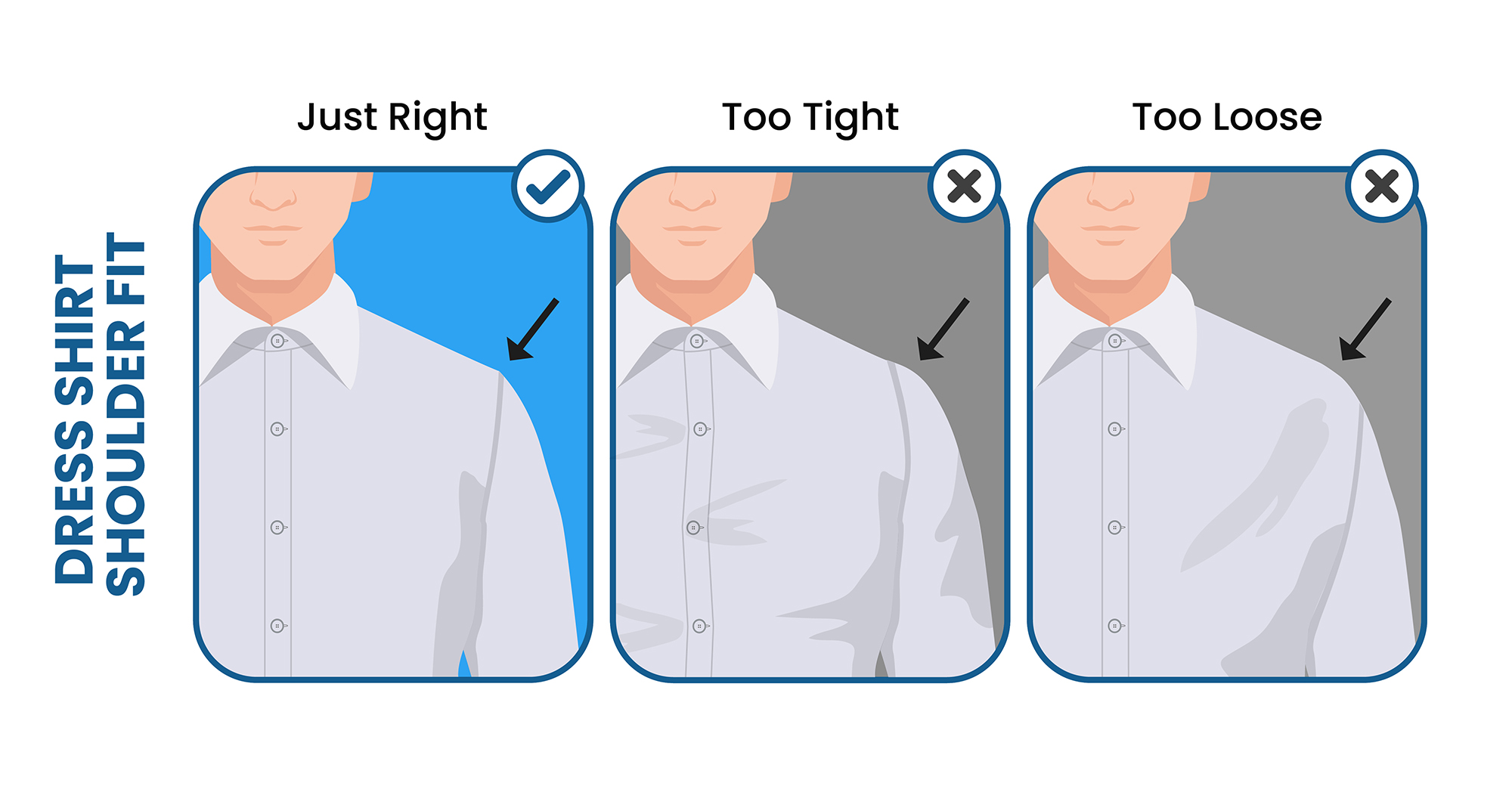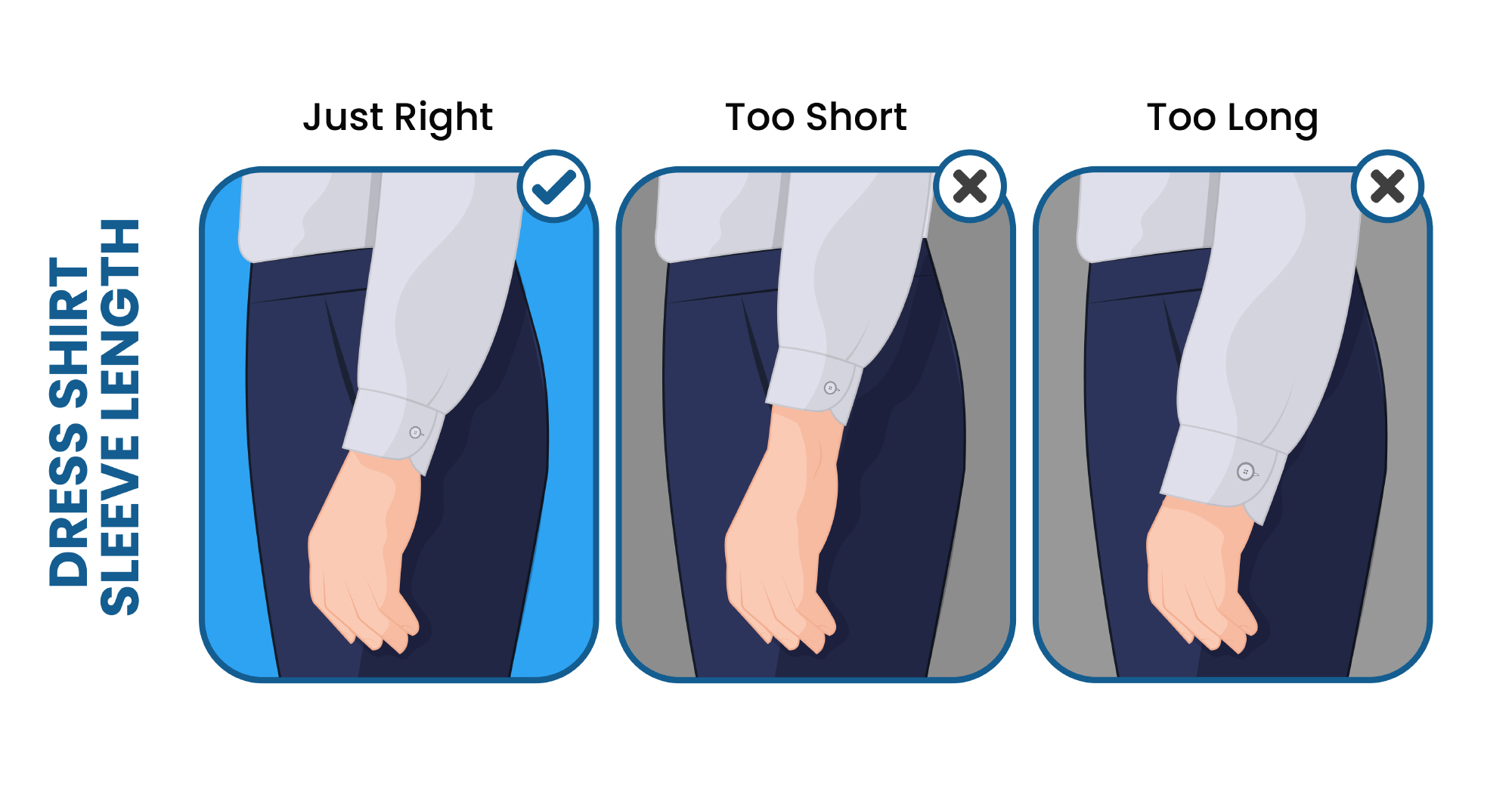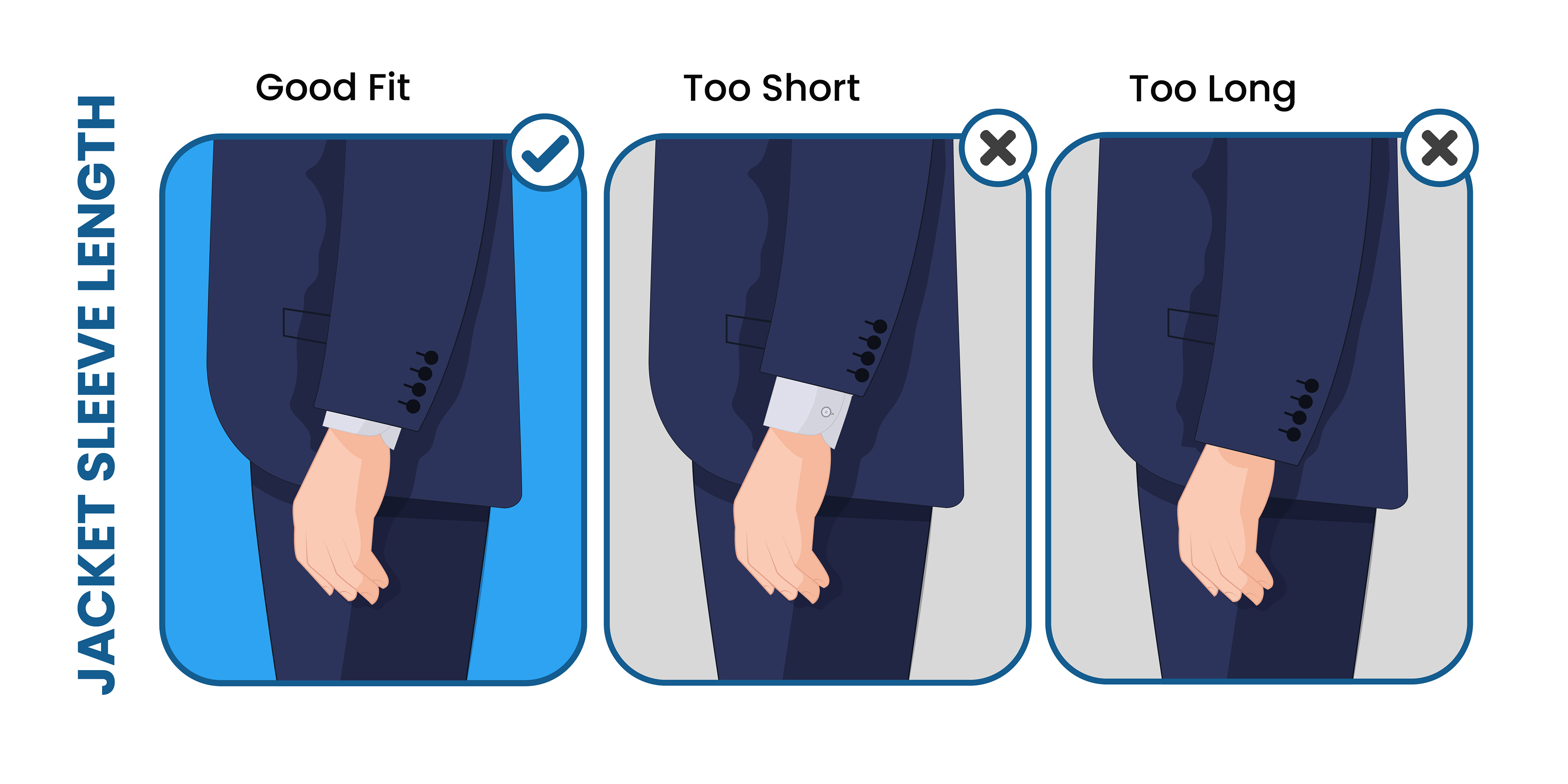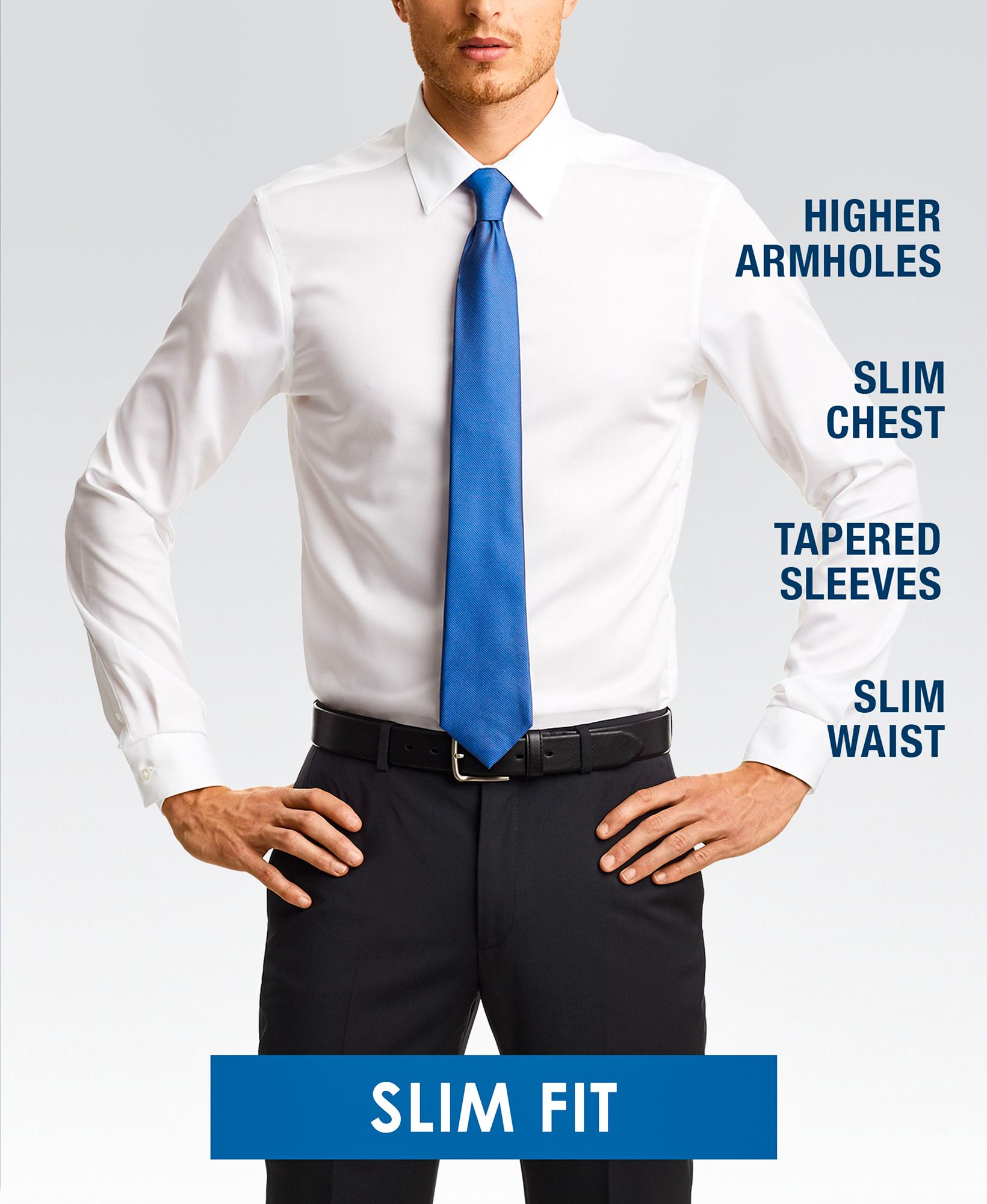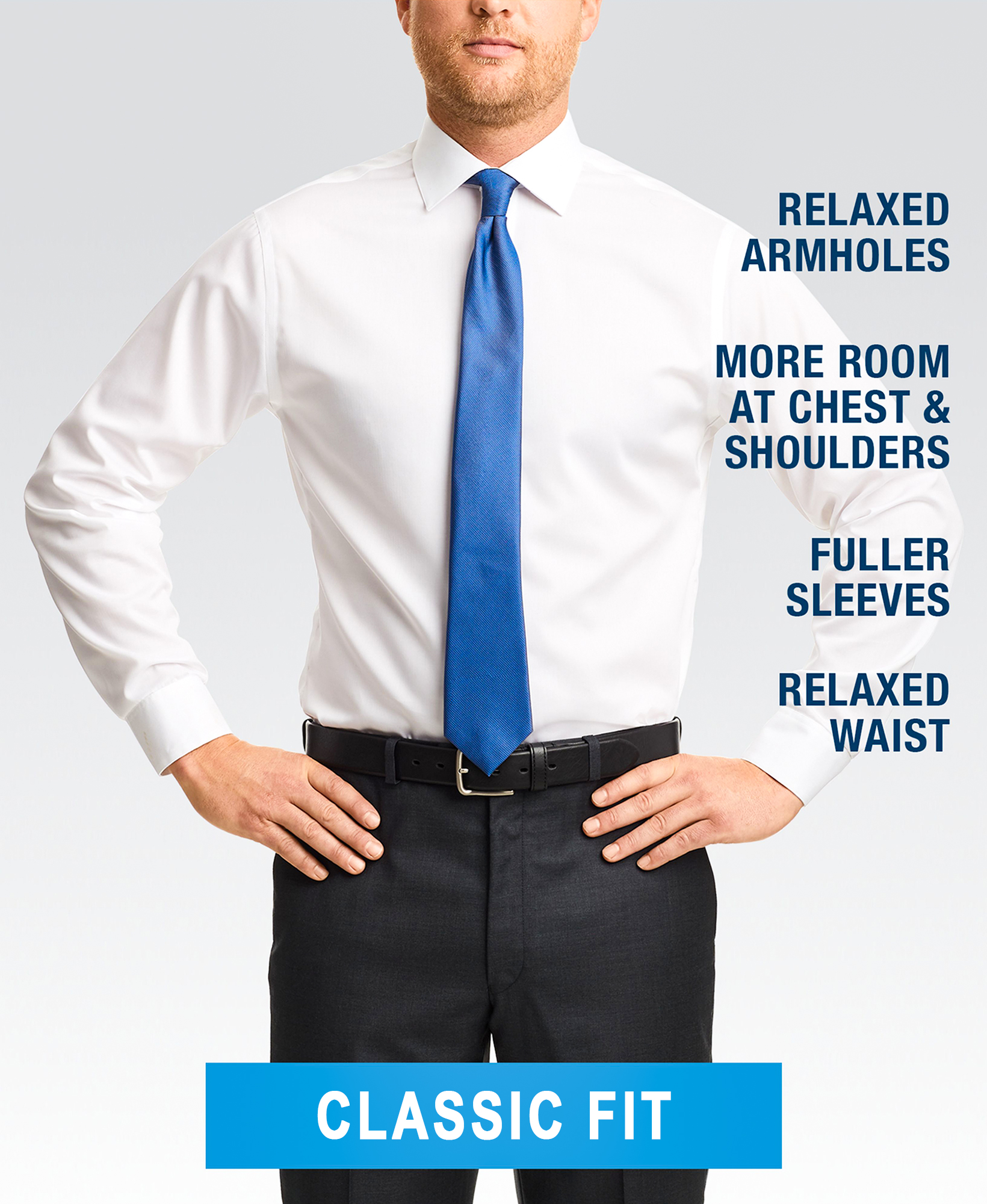A good-looking dress shirt is one of the basic building blocks for looking professional. Therefore, it’s essential to measure for a dress shirt to ensure you get one that fits you perfectly.
Don’t know how to do it? Get ready to learn how to find your current dress shirt measurements, then!
First, you’ll need to grab a flexible tape measure, paper, and a pencil.
You’ll also need a helper for some of the trickier areas to measure, or you can use a dress shirt you already have that fits very well.
Measure Around the Neck
To be sure that your collar doesn’t choke you or hang too far away from your throat, you’ll need to measure around your neck.
Loosely wrap your tape measure around the base of your neck, at the general spot where your collar would be. This should be located just under your Adam’s apple.
Relax your body to ensure that you’re getting the most accurate measurement.
Pull the tape slightly tighter to have no slack, and insert one or two fingers. This extra room will give you enough space so your collar doesn’t cut off your air.
If the measurement you wind up with is between collar sizes, round up to the next highest collar size.
Measure Your Shoulder Width
You should recruit some help for this measurement.
If you don’t have an extra pair of hands at your disposal, you can measure an existing dress shirt that you know fits you well in the shoulders.
Place your measuring tape at the tip of one shoulder blade. Then, run it across to the end of the other shoulder blade.
The tape measure will curve across your upper back where your dress shirt yoke lies, following your body’s natural line.
If measuring a dress shirt, lay it flat on a smooth surface, buttoned up.
Locate the seam where the yoke and the shirt sleeve connect. Then, measure directly across the other side, pulling the dress shirt taut.
Chest Measurement
Stand at ease with your arms relaxed at your side.
The widest part of your torso should be just level with your underarms; run your tape measure around that spot.
Remember to keep the tape level the entire circumference; don’t let any part of it drop.
Keeping your tape measure taut, insert a finger or two. This extra space is for ease of movement.
Do not be tempted to stick out your chest for this measurement! That will only provide an inaccurate measurement, and your dress shirt will be too large as a result.
Measure Around the Waist
Stand as you normally would, with your typical posture. Do not suck in your belly for this measurement!
Wrap your tape measure along the level of your belly button. This is typically the most narrow spot of your waist if you have some shaping in that area.
Remember to keep your tape measure parallel to the ground the entire way around.
Don’t allow any slack in the tape, but do tack on half an inch for breathing room.
Measure the Dress Shirt Length
If your helper has wandered off, call them back over!
First, hold one end of the tape measure in the back at the base of your neck.
Next, run the measuring tape down to where your dress shirt should end. This would generally be just under your rear end, give or take.
If you are sans helper and are using an existing shirt instead, lay it out on a flat surface while buttoned up.
Start your tape measure a the base of your collar in the back.
Next, lay your tape down the middle of the dress shirt to its hem. Don’t stretch your dress shirt while doing this, but do fully spread it out.
Measure the Sleeve Length
Don’t let your measuring partner off the hook just yet!
The easiest way is to place the measuring tape at the point of your shoulder, move towards the elbow, and drive the tape toward your bent arm until you reach the end edge of the cuff.
Bend your arm significantly when taking this measurement to allow room for movement and flexibility.
Alternatively, spread an existing shirt out in front of you, with the front buttons and the cuffs buttoned.
Extend the sleeve, laying it the full length but without stretching it.
Measure from the center of the collar’s back, right below the band, toward the edge of the yoke.
Put the finger on the tape to hold it in place. Then, turn your tape measure to run down the sleeve to the edge of the cuff.
Measure the Sleeve Width
You’ll measure around your biceps for this section since they are the largest part of your arm.
Let your arm relax loosely by your side. Then, find the widest part of your bicep and wrap the tape measure around that area.
Don’t pull too taught, but also don’t add any extra space.
You can also use an existing shirt that fits you well for this measurement.
After you’ve laid out your dress shirt with the sleeve extended, measure just under the armpit, from the bottom to the top of the sleeve.
Multiply your measurement in two to get your sleeve width.
In addition to the bicep, it’s sometimes useful to measure the circumference of the arm wrist to determine the cuff measurement, which is the tightest point of the dress shirt sleeve width.
Again, you can use your existing dress shirt, measure the cuff, and multiply the measurement by two.
How a Dress Shirt Should Fit if Properly Measured
It is critical to take exact measurements to look your best in any dress shirt. That’s how you’ll make the shirt fit perfectly on you.
In addition, each dress shirt part should sit on your body as though it were designed with your shape in mind.
For example, the shoulders on your dress shirt are an excellent way to judge a shirt’s fit.
Your shoulder seam needs to end precisely at the tips of your shoulder blades. If they hang over at all, your shirt will look baggy and is clearly too large.
At the other extreme, if the seams don’t make it all the way to the ends of your shoulders, the fabric will bunch up along the tops of your shoulder and restrict your movement.
Your sleeves are another glaring area if your measurements are not correct. Their length doesn’t offer you a tremendous amount of wiggle room, so they need to be precise.
Finally, your cuff should end at the base of your thumb, where it meets the rest of your hand. This is critical for a good fit with your suit jacket.
Ideally, ¼ inch of your shirt sleeve should be visible under your suit jacket sleeve.
How the Fit Affects Dress Shirt Measurements
The type of fit of your dress shirt will slightly impact its measurements.
For example, consider a classic fit dress shirt vs. a slim fit. You can buy each shirt in the same size, but both will have slightly different measurements.
A classic fit dress shirt will have more material to measure because it is roomier by nature. It has wider armholes and more fabric in the chest and shoulder area.
On the other hand, a slim-fit dress shirt involves tapering. So you’ll notice that this is another way it skews from classic fit measurements.
Different Dress Shirt Sizes
Clothing that comes off-the-rack is always pre-sized. The clothing industry sets these pre-set sizes based on the most common body types and sizes.
They are really just making their best guesses at what would fit most men. You may get lucky and find clothing very close to your measurements, but we know that all body types are different from each other.
There are two different ways to size manufactured dress shirts; numerical sizing and alpha sizing.
Numerical sizing is based on your neck size and sleeve length.
The first number is the circumference of your neck, and the second number is how long your sleeve is.
Sometimes you’ll notice a third number; this is your chest size. Dress shirts with chest circumferences always fit you more precisely; they offer one more level of accuracy.
Alpha sizing is less precise than numerical. Small, medium, and large (denoted as S, M, or L) are arbitrary sizes chosen by the clothing company.
Unfortunately, there is no industry standard for alpha sizing, so you’ll need to try on each dress shirt.
However, clothing companies often provide a measurement range, which gives you a good jumping-off point for where to start.
Hi, I’m Alex, and I’ve studied and specialized in styling in Rome. Through my writing, I want to help men dress well and learn the purpose and significance of suits and other formal attire. My final goal is to make men more confident in their wardrobe choice and life in general.
